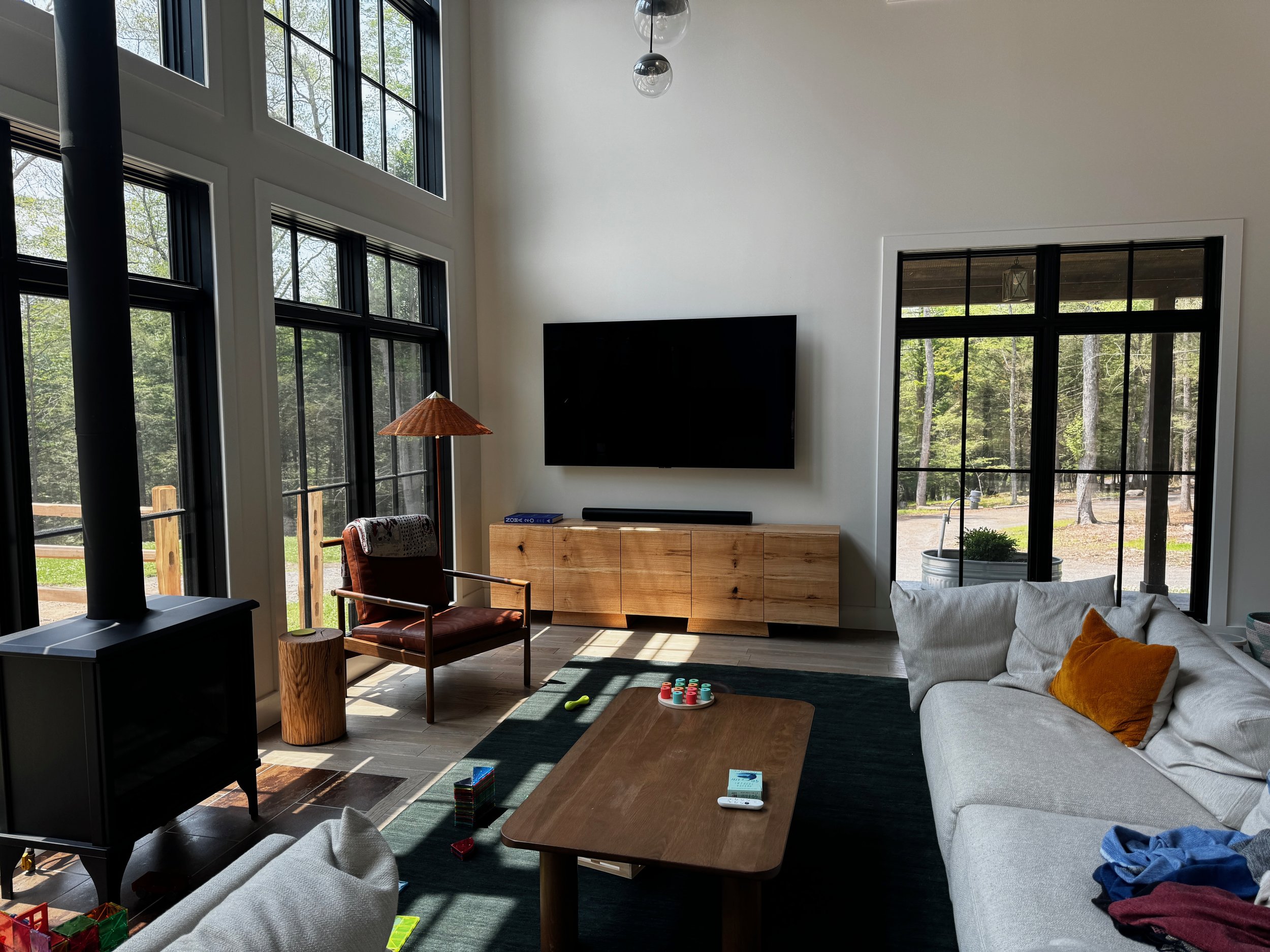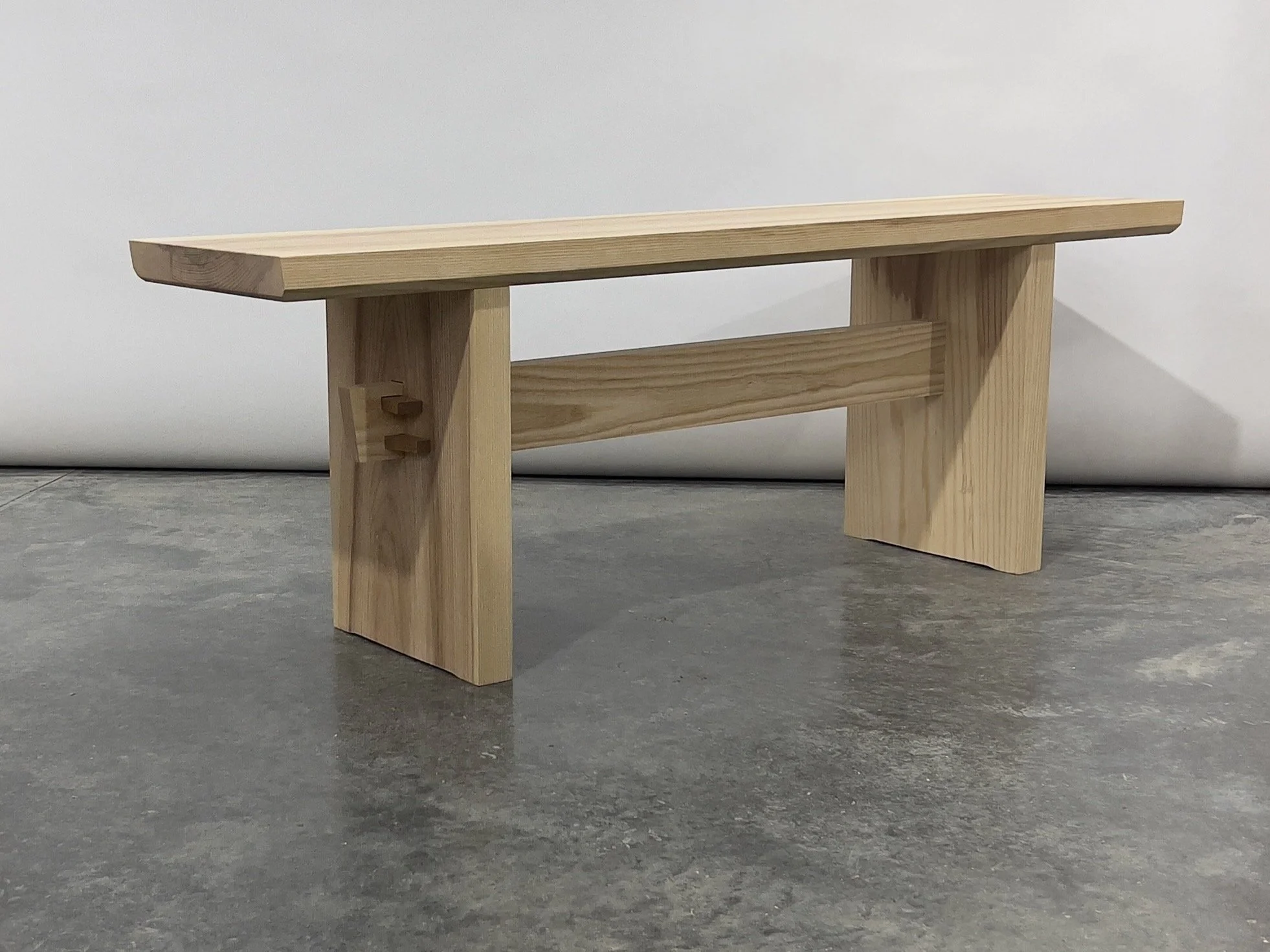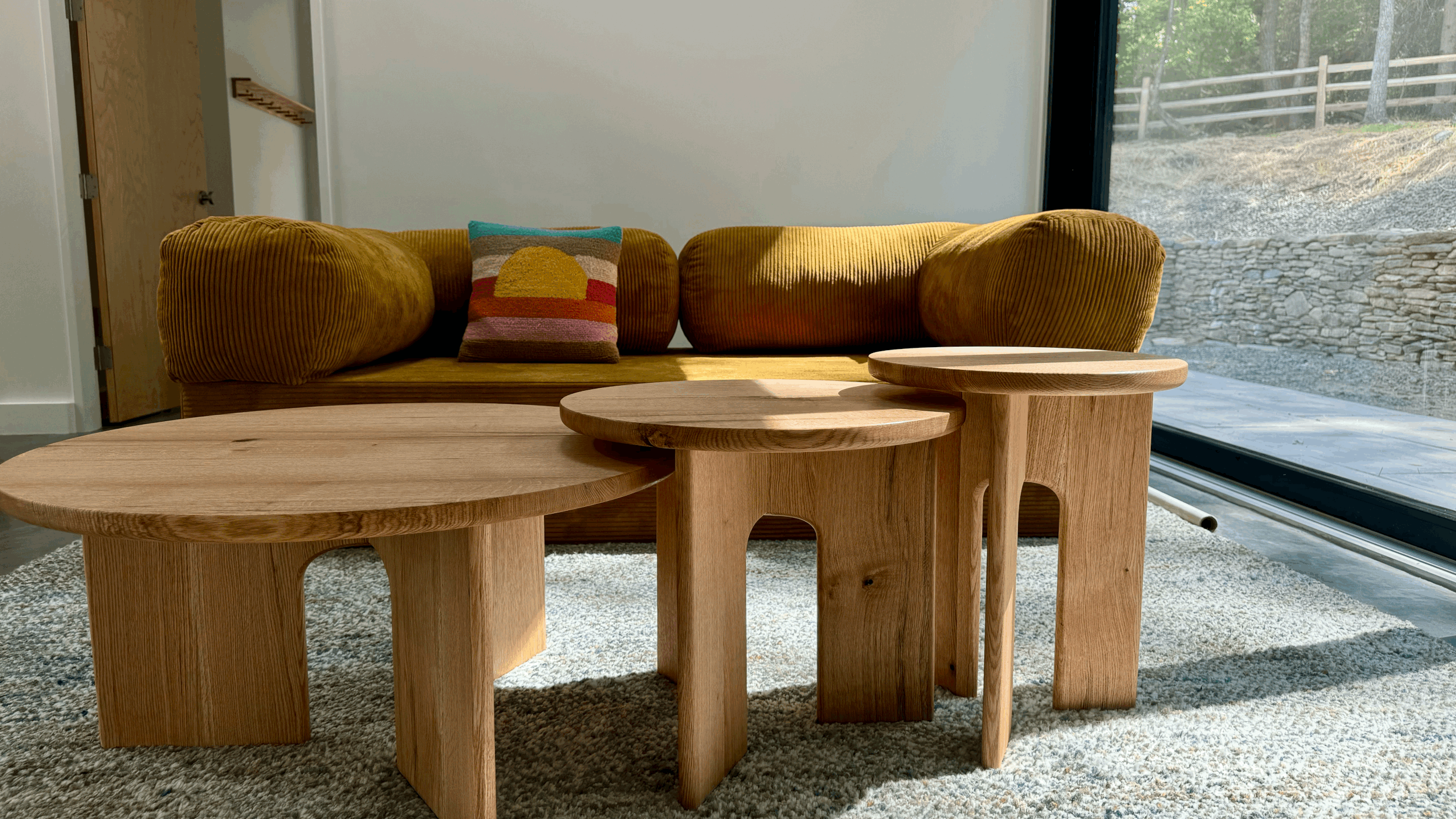Japandi Style: Japanese Minimalism Meets Scandinavian Warmth
Japandi is a design philosiphy that we truly enjoy and think you will find interesting. Japandi design (as you can probably imagine) is an amalgam of concepts from Scandinavian and Japanese design. These two design languages actually complement each other very well, both having clean lines, functional sensibilities and aesthetic considerations that are very similar.
Our Hutte table features elements informed by Japandi design. Although quarter sawn white oak might not be widely used in Japanese furniture (their endemic oak is quite different), the color, tone and grain fit nicely within this style. Shown in an Oiled finish, this wood can be finished with a (lighter toned) traditional Scandinavian soap finish to further complete the look.
If you’ve ever wished your home could feel both serene and stylish, Japandi might be the perfect design philosophy for you. A hybrid of Japanese and Scandinavian aesthetics, Japandi combines the minimalist beauty and craftsmanship of Japanese design with the coziness and functionality of Scandinavian interiors. The result? A space that feels grounded, warm, and intentional.
What Is Japandi?
Japandi is a fusion of:
Japanese wabi-sabi, which embraces imperfection, simplicity, and nature.
Scandinavian hygge, a lifestyle of comfort, coziness, and well-being.
Though they originate from opposite sides of the world, these styles share core values: simplicity, functionality, natural materials, and a deep respect for craftsmanship.
The angled and under-beveled top (shown above), straight legs and exposed joinery are features we love to incorporate in this style.
Key Features of Japandi Design
Minimalism with Purpose
Japandi spaces are clutter-free, but not cold. Every piece has a function or a story. Clean lines and open spaces invite calm and mindfulness.Natural Materials
Think wood, bamboo, linen, stone, and clay. The palette favors soft neutrals—like beige, taupe, charcoal, and muted greens—infused with earthy textures.Wood
We use both locally sourced hardwoods and ethically sourced softwoods to create our Japandi influenced designs. Straight grain and even tones are the most compatible with this aesthetic. Local hardwood species we use are: Quarter and Rift Sawn White Oak, American Ash, Maple, and Elm *always with a preference for straight grain or quarter sawn wood.
Soft woods we use are straight grained (or CVG; clear vertical grain): Alaskan Yellow Cedar, Western Red Cedar, Hinoki, Port Orford Cedar and Eastern White Pine. Softwoods are traditionally used in Japanese designs, especially in doors, shoji and kumiko work - however they are also suitable for furniture use. Soft woods are generally finished by kanna (Japanese style hand plane) and can be left unfinished. The beautiful sheen and texture kanna imparts on these woods is truly extraordinary.
Contrast and Balance
Japandi plays with contrast: dark woods meet light Scandinavian tones, rustic ceramics sit beside sleek furniture, and minimalism is softened with tactile warmth.Handcrafted and Sustainable
Sustainability is key. Furniture and decor are chosen for their longevity, craftsmanship, and eco-friendliness—often handmade or sourced from local artisans.Cozy Yet Calm
Layered textiles, low-profile furniture, and natural light make Japandi homes feel livable and serene. It’s about creating a retreat from the noise of modern life.Joinery and Craftsmanship
Although not always a key element of this style, in our minds it is needed to complete the look. Traditional and Japanese Joinery can be seamlessly incorporated into a piece of furniture, benefitting not only its structure but also the form. Revealing the craft and craftsmanship of the builder, when properly executed it adds life and vibrancy to the piece. Joinery can be simple or very complex; hidden or exposed depending on the overall function and look of the piece.
This minamilist record shelving we designed has a Japandi aesthetic, with straight grained ash, and clean lines throughout. Custom milled flat moulding completes the look.
This media console features rift sawn oak, that we were able to salvage from our clients property. The clean design easily blends in with the space, and looks much lighter than it’s actual 8’ width. The hand sculpted door pulls, hidden at the top of each door. The legs are set back and angled on a 7degree half dovetail shape. The minimalist log table on the left of the picture was also turned from trees we saved on the property.
Why Japandi?
Japandi design offers a timeless antidote: a calm, clutter-free space that still feels personal and warm. It's not about perfection—it's about intention. The design and construction of Japandi furniture should be natural and functional.
Japandi is more than a trend; it's a lifestyle choice rooted in mindfulness, balance, and the beauty in simplicity. As much as it is a design language, it is also a feeling. This feeling may be evoked by the harmony of natural materials, complementing the craftsmanship and design. Whatever influence you choose, Japandi influence should bring peace and enjoyment to your space.
Shown is our “Bank” bench, with a traditional Scandanavian scrubbed soap finish. The soap finish lightens the ash wood, preserving the true white tone of the wood. Soap finish is a natural option that is durable and easy to clean (and reapply); we feel that this finish embodies all the great characteristics of Japandi style, in a finish.
Check out more of our Japandi influenced designs !
Produced all from the same tree for perfectly matching rift sawn oak grain, this group of three partially nesting tables complement each other perfectly. The design is round to maximize the space and with heights directly inverse to their individual circumference.
Our Tres coffee table, featuring turned and hand textured rift white oak legs, with a soap finished round Ash top.







